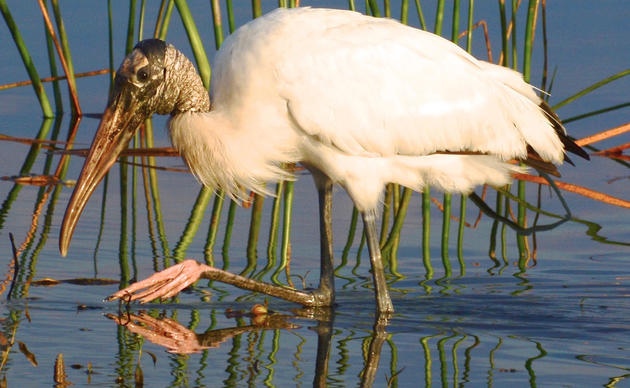Florida is home to over 500 nonnative species (animals that are living outside of captivity and did not historically live here) of wildlife and fish. But how did all these new animals get here? There are a variety of ways. One way is ballast water in ships which is how the green mussel (Perna viridis) was introduced to Tampa Bay in 1999. Other pathways include on propeller blades of boats, in packing materials, international food markets and more. But one of the most common ways for nonnatives to be introdcued is through the escape or release from pet owners. Now many of these animals will not survive. But when they do and are able to establish a breeding population, costly problems arise.
An example that hits somewhat close to home is the Burmese python. This large constrictor has received much publicity in recent years. While it hasn't reached Corkscrew Swamp Sanctuary, we are vigilant and constantly on the lookout for this as well as other invasive animals. Currently the only problematic invasive animal is the wild hog.
Before buying an exotic pet, please ask yourself a few questions. How big will this animal eventually get and what does it eat? Will you be able to care for this animal for the length of its life? If you have an exotic pet already and are no longer capable of caring for it, please don't release it. There are hobby groups, local museums, zoos, pet shops, and other programs that can assist. For additional help, contact FWC's adoption hotline at 888-IVE-GOT1.
How you can help, right now
Donate to Protect Corkscrew's Birds and Wetlands
Make a meaningful and lasting gift to protect Corkscrew Swamp Sanctuary's rare Everglades habitat.
Become a Member
Join an extraordinary and growing community of members dedicated to supporting the conservation of natural ecosystems throughout the Western Everglades.
Sign Up for the Corkscrew eNewsletter
Stay connected to Corkscrew Swamp. Sign up for our monthly online newsletter.




